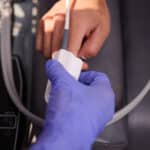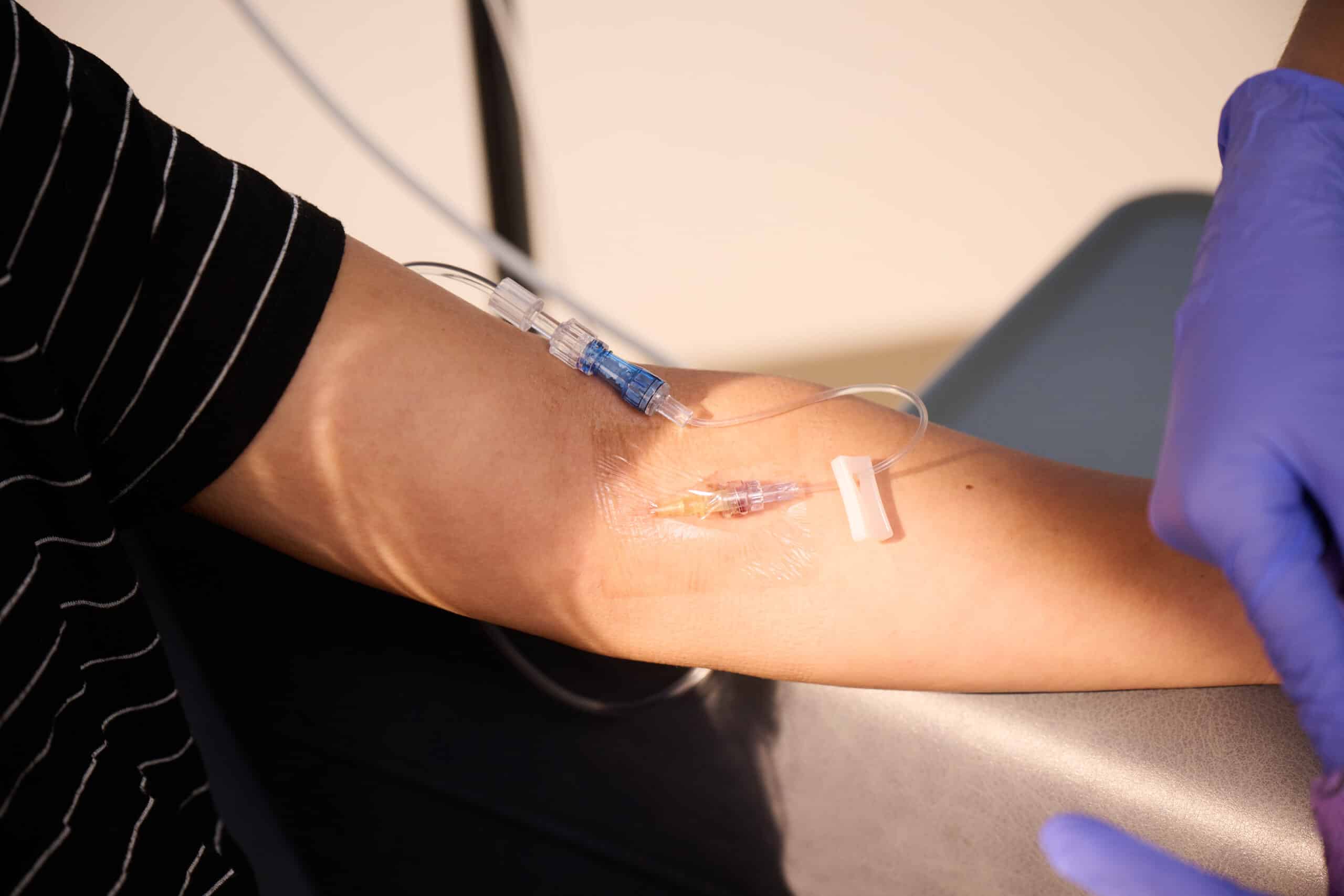The current standard of care around IV monitoring is to “wait and see” if an injury occurs. This is simply not acceptable – especially in cases where an infiltration or extravasation will lead to serious patient harm. “Routine” IV assessments are simply not enough – what might happen to a patient’s IV in between these routine assessments?
Infusion centers often miss IV extravasation injuries because patients are only there to receive their infusions, often departing before staff can detect a problem or before the injury fully develops. In many cases, the injury is not detected by clinicians during the infusion, and the absence of supervision post-infusion can lead to delays in patient care when extravasation has occurred, which leads to severe consequences, including drug delivery errors, scarring, staining, nerve damage, amputation, even death.
Take iron infusions, for example. They are one of the most common treatments seniors receive intravenously as they age – 9 million of them per year in the U.S. alone. Women, too, are often prescribed iron infusions when supplements alone are not enough to treat anemia. While an infusion can take as little as 15 minutes, it can cause a lifetime of damage. As iron leaks outside of the vein, it can begin as a small, pea-sized stain but get drastically more extensive in the following weeks, causing permanent, irreversible staining of the skin.
While the standard reactive approach does nothing to reduce the incidence of events like this, the ability to see the unseen by taking a proactive approach to infiltration and extravasation can dramatically reduce the instances of IV injuries – as research has proven.
Vascular access specialist, nurse consultant, and IV safety advocate Andrew Barton conducted a study at the UK’s Frimley Health NHS Hospital, which found that ivWatch’s proprietary patient monitoring system drastically reduced IV injuries, improved patient safety rates, and lowered costs. Integrating IV infiltration and extravasation detection technology reduced the rate of extravasation injury by 100%, preventing scores of potentially serious vesicant and non-vesicant wounds that the infusion center staff were regularly seeing prior to implementing continuous monitoring technology.
A total of 206 infusions and 214 peripheral IV sites were monitored via ivWatch’s SmartTouch Sensor for a total of 357 hours. The device captured 15 infiltrations in the 214 peripheral IV sites monitored, all caught in the very early stages, so patients had minimal pain or discomfort with no extravasation injuries.
An article by Barton published last month in the peer-reviewed British Journal of Nursing examines the immense economic impact of infiltration and extravasation injuries within clinical environments. It illustrates how four commonly administered intravenous treatments – systemic anti-cancer therapy, vasopressors, drugs with non-physiological pH, and iron infusions – may result in injury and the associated risk factors and costs of each via patient case studies for the respective treatments.
“The estimated financial savings from the case studies alone would easily justify the investment in ivWatch to prevent infiltration and extravasation from occurring,” Barton notes in the article. “ivWatch technology helps both the patient, giving them confidence that an extravasation injury was not likely to occur during IV therapy administration and clinical staff, who can rely on the technology to monitor patients and identify potential problems.”
Barton continues, “Added to the savings outlined in this article are the positive effects of early identification and risk mitigation that the ivWatch technology makes possible. These include decreased lengths of stays, reduced numbers of procedures, elimination of delays in care, reduction of drug dosing errors, decreased risk of hospital-acquired infections, reduced pressure on beds, minimal medical supply usage, less wastage, and lessening of the burdens on clinical resources.”
Barton is the author of the NIVAS (National Infusion and Vascular Access Society) Infiltration and Extravasation Toolkit, which is designed to highlight the risks of both and facilitate healthcare organizations’ ability to improve patient safety and experience when it comes to IVs. The Toolkit can serve as a model for healthcare organizations, including infusion centers both in the U.S. and abroad, to develop their own toolkits
Now is the time to move away from our “wait and see” mindset with IV injuries and toward a holistic, proactive approach. Simply put, with tools available to detect infiltrations and extravasations the moment they occur, there are no longer excuses for IV injuries.
About the Author
Sara Brooke joined ivWatch in October 2023 and has the crucial role of educating hospital clinical staff, global distributors, and nurses about ivWatch. Focused on building a world-class training program, she is also responsible for the ivWatch clinical specialist team. Leveraging both her clinical and sales experience, Sara’s varied background makes her especially well-suited to this hybrid position. ivWatch, LLC is a medical device and biosensor company focused on improving the safety and effectiveness of intravenous (IV) therapy. IV therapy is a basic yet critical component of care in hospital and outpatient settings, but it has a high failure rate. Continuous monitors exist to keep track of patients’ heart and blood oxygen levels. Until now, no technology has been available to continuously monitor the health of a patient’s IV site, and whether drugs or fluids are being delivered through the vein or leaking into the tissue. To learn more about the ivWatch patient monitoring system for IV infiltrations and extravasations, visit: https://www.ivwatch.com/tech-overview.
About the National Infusion Center Association
NICA is dedicated to ensuring that the nation’s infusion centers remain a safe, more efficient, and more cost-effective alternative to hospital settings for consistent, high-quality care.
Infusion providers have a vested interest in the sustainability of the infusion delivery channel and its ability to serve vulnerable patient populations. NICA Provider Members have a voice and a seat at the table to inform NICA’s activities and the opportunity to remain highly engaged in the expansion and optimization of the infusion industry. Learn more about becoming a NICA member here: https://infusioncenter.org/join-nica/
Is your organization interested in becoming a featured subject matter expert on The Infusion Blog? Email [email protected] to inquire about opportunities for participation.





